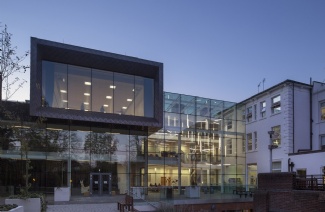很多考生没有写作思路的时候会参考高分范文,这对我们来说确实有很大的帮助,但是我们要注意自己从中总结一些亮点句型以及结构安排。所以不能只是参考,还需要学会总结。下面来看看小编为大家整理的欣赏以及亮点分析。
下面是一篇官方给出满分的ARGUMENT范文,我们来一起赏析,看看它为何能scored six。
The following appeared as part of an article in a daily newspaper:
"Most companies would agree that as the risk of physical injury occurring on the job increases, the wages paid to employees should also increase. Hence it makes financial sense for employers to make the workplace safer: they could thus reduce their payroll expenses and save money."
Discuss how well reasoned you find this argument. In your discussion be sure to analyze the line of reasoning and the use of evidence in the argument. For example, you may need to consider what questionable assumptions underlie the thinking and what alternative explanations or counterexamples might weaken the conclusion. You can also discuss what sort of evidence would strengthen or refute the argument, what changes in the argument would make it more logically sound, and what, if anything, would help you better evaluate its conclusion.
This argument states that it makes financial sense for employers to make the workplace safer because by making the workplace safer then lower wages could be paid to employees. This conclusion is based on the premise that as the list of physical injury increases, the wages paid to employees should also increase. However, there are several assumptions that may not necessarily apply to this argument. For example, the costs associated with making the workplace safe must outweigh the increased payroll expenses due to hazardous conditions. Also, one must look at the plausability of improving the work environment. And finally, because most companies agree that as the risk of injury increases so will wages doesn't necessarily mean that the all companies which have hazardous work environments agree.
The first issue to be addressed is whether increased labor costs justify large capital expenditures to improve the work environment. Clearly one could argue that if making the workplace safe would cost an exorbitant amount of money in comparison to leaving the workplace as is and paying slightly increased wages than it would not make sense to improve the work environment. For example, if making the workplace safe would cost $100 million versus additional payroll expenses of only $5,000 per year, it would make financial sense to simply pay the increased wages. No business or business owner with any sense would pay all that extra money just to save a couple dollars and improve employee health and relations. To consider this, a cost benefit analysis must be made. I also feel that although a cost benefit analysis should be the determining factor with regard to these decisions making financial sense, it may not be the determining factor with regard to making social, moral and ethical sense.
This argument also relies on the idea that companies solely use financial sense in analysing improving the work environment. This is not the case. Companies look at other considerations such as the negative social ramifications of high on-job injuries. For example, Toyota spends large amounts of money improving its environment because while its goal is to be profitable, it also prides itself on high employee morale and an almost perfectly safe work environment. However, Toyota finds that it can do both, as by improving employee health and employee relations they are guaranteed a more motivated staff, and hence a more efficient staff; this guarantees more money for the business as well as more safety for the employees.
Finally one must understand that not all work environments can be made safer. For example, in the case of coal mining, a company only has limited ways of making the work environment safe. While companies may be able to ensure some safety precautions, they may not be able to provide all the safety measures necessary. In other words, a mining company has limited ability to control the air quality within a coal mine and therefore it cannot control the risk of employees getting blacklung. In other words, regardless of the intent of the company, some jobs are simply dangerous in nature.
In conclusion, while at first it may seem to make financial sense to improve the safety of the work environment sometimes it truly does not make financial sense. Furthermore, financial sense may not be the only issue a company faces. Other types of analyses must be made such as the social ramifications of an unsafe work environment and the overall ability of a company to improve that environment (i.e。, coal mine)。 Before any decision is made, all this things must be considered, not simply the reduction of payroll expenses.
GRE这篇官方钦定满分的范文,其最明显的优点在于:
1. 字数高达599words, GRE充分体现了字数为王的判分倾向。
2. 标准的五段制,首段、GRE末端,中间三段,看上去很美。
3. 没有陈词滥调、GRE满篇废话的模板式语言。
只有以上三点离满分还是很远的,GRE之所以SIX,我看更重要的在于,每段各尽其责,既独立又统一,形成了完整的ARGUMENT,specifically:
1. 首段再现了原TOPIC的推理过程,GRE并指出其assumptions多有不适;尤其令阅卷人高兴的是:首段在最后简化罗列了推理中的三个问题。要知道美国人就喜欢的作文---总分式,在首段就把三个ideas罗列出来,然后在中间三段分别展开,先总后分,一目了然。
2. 中一的TS -- “The first issue to be addressed is whether increased labor costs justify large capital expenditures to improve the work environment.”可谓是一针见血,一剑封喉。对于这样严重的推理漏洞,如果不首先指出,其argument必然软弱乏力。此所谓Topic中的 “必削点”,不可不察。
3. 中二的TS – “This argument also relies on the idea that companies solely use financial sense in analysing improving the work environment.”这可谓是剑走偏锋,独辟蹊径,出人所料。文章竟然批评了Topic以钱为本经营理念,提出了要以人为本,这样写是有一定风险,毕竟这不是Issue。那本文是如何化险为夷的呢?且看本段最后一句“this guarantees more money for the business as well as more safety for the employees.”我不由得长舒一口,人家再次回归了,又回到了Topic中以“Money”为本的推理。
4. 中三的TS – “Finally one must understand that not all work environments can be made safer.”这充分体现了作者不只是坐而论道的arguer,而是关心其可行性的现实主义者,考虑到方案本身的可行性和局限性。
5. 末端不但对首段提出的论点做出了重复性的总结,GRE而且又不厌其烦地把中间三段的ideas一一罗列。如此“啰嗦”估计令某些同学略有不齿,但这恰恰是美国人的最爱,cultural shock了吧?
以上是小编为大家整理的满分GRE作文及分析,希望帮助大家通过参考梳理出自己的答题技巧。

















